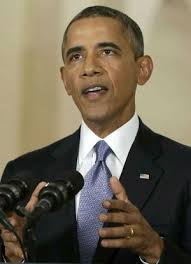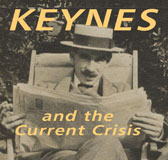There is always a chance that Barack Obama’s luck will hold and therefore that the face saving way he concocted for getting U.S. combat troops, and not much else, out of Iraq won’t unravel while he is still in office.
But events on the ground portend otherwise. Now is therefore a good time to reflect on the importance of saving face, and on what losing face can mean.
Military might is indispensible for superintending a global empire. But being able to fight several wars at once and to annihilate the planet thousands of times over is not enough. America needs “credibility.”
It has commitments to honor – to the global capitalist order and to national elites. And, from time to time, it has rebellions to quell. It doesn’t always have to prevail in fact. But it cannot seem to have been bested in a way that makes it look weak. Above all, it must never lose face.
It can be instructive to think of a superpower as a criminal organization writ large. For both, strength matters. But the appearance of strength matters more.
It was this way too when the Soviet Union existed, and it will be this way again if and when China assumes superpower status. It has been this way for all empires at all times.
Saving face has always been deemed crucial. There is no American exceptionalism here.
The consequences can be, and often are, horrendous.
For example, if the story Robert Dallek tells in Camelot’s Court: Inside the Kennedy White House (2013) is even remotely on track, events in Berlin and Cuba got blown up into such proportions that the world almost came to an end because whatever else moved Kennedy and his advisors, losing face was out of the question.
Similar considerations explain why they got the Vietnam War going.
Dallek accepts, as best he can, the standard view of Kennedy’s presidency. His Kennedy therefore comes off as a rather statesmanlike figure (with a little brother for an attack dog); and while many of Kennedy’s top military and intelligence advisors are depicted like the Neanderthals they were, the civilians in Camelot’s “ministry of talent” seem almost benign.
But the evidence he presents tells a different story – “the brightest and the best” were clueless and, for the most part, irrationally anti-Communist. They were also divided among themselves.
By the time the Kennedys ratcheted up America’s involvement in Vietnam, both the President and the Attorney General had come to doubt the advice they were getting from the military and the CIA. And they seem to have had more than an inkling of what would happen if he let them have their war.
Why then did Kennedy move forward anyway? Domestic political considerations played a role. But the main reason was that, in his mind and in his brother’s, credibility was all; he could not appear to back down or otherwise lose face.
That was more than a half century ago, but it is how our leaders still think. Caroline Kennedy was on to something in the 2008 electoral campaign when she very publically likened Barack Obama to her father.
Lyndon Johnson seems to have been more of a true believer than his predecessor, though it must have been clear to him, by 1966 if not before, that he was ratcheting up a lost war. It was certainly clear to Richard Nixon.
But they felt stuck – “ankle deep…, waist deep…, shoulder deep in the big muddy,” as Pete Seeger put it. And like “the big fool” in Seeger’s song, they saw no way out but to push on.
They did have a choice, of course; they could have withdrawn. But then the empire’s credibility would be shot. This they could not permit – no matter how much death and destruction they had to cause.
The American people would have been better off had the empire taken the hit and been humiliated sooner, but the Vietnam War was never about the American people – just as it was never about “saving” the Vietnamese. It was about the welfare and security of the economic and political elites for whose benefit the empire exists.
As it turned out, Johnson and Nixon could only postpone the inevitable; they were powerless to prevent it. After perpetrating a decade long series of gratuitous horrors, the United States ultimately did lose face.
The picture of helicopters evacuating the American embassy in Saigon on April 30, 1975, as the city was liberated – or “fell,” as our media still say – lingers to this day.
This is why Ronald Reagan fought his wars in Central America through proxies, and why, to overcome the “Vietnam Syndrome,” he and then Bush the Father found it expedient to pick fights with such mighty foes as Grenada and Panama.
But who really won the Vietnam War? Decades ago, the answer seemed obvious. It is not obvious anymore.
According to Dallek, among the Kennedy advisors who stayed on with Lyndon Johnson, Walt Rostow stands out for never later expressing regrets. Rostow, it seems, thought the war was a success because the dominoes never fell – and that, he insisted, had been the goal all along.
Rostow’s moral and intellectual judgment may be even more abysmal than, say, Robert McNamara’s. But, for several decades now, it has looked like he was right. Notwithstanding its humiliating defeat, the U.S. did wreak so much devastation upon the victor that Vietnam would never serve as an example that other countries could emulate.
And what other purpose did all the death and devastation serve?
America “lost” Vietnam but got what it was after anyway. It is telling that victorious Vietnam has long been more or less in the American ambit. Would it have been any different if America had “won?”
This example, along with countless others that could be adduced, shows that, because time and perspective are crucial determinants, maintaining credibility and saving face have more to do with how outcomes and events seem to people at the time than with inalterable matters of fact.
Johnson and Nixon — and also Gerald Ford, whose misfortune was to inherit the presidency and therefore the Vietnam War after Nixon resigned — fell afoul of this basic truth.
They did do their part to assure that the United States would get what it was fighting for. But, at the time and for many years thereafter, it looked like they caused the United States to suffer an ignominious defeat.
In Kennedy’s defense, he and his advisors did not have a clear view of what the future would be like if America’s involvement in Vietnam intensified, though some of them had a pretty good idea. But, by the middle of the decade, the “quagmire” was already obvious.
From then on, if not before, winning was not an option, but saving face was an imperative.
Four decades later, Barack Obama entered the White House at a time when both the Afghanistan and Iraq Wars had already been in face saving phases for several years.
In the early days of the Bush-Cheney presidency, overthrowing Afghanistan’s Taliban government was easy, and so was killing lots of Afghanis – in revenge for what fifteen Saudis and four other Al Qaeda hijackers, none of them Afghani, did on 9/11.
But anyone who knew anything about Afghanistan could have told Bush even before he launched that still unfolding war that he would soon find that he had put the United States shoulder deep or worse in a muddy even more inescapable than Vietnam.
This was not quite as obvious in the case of Iraq, at least in the first months. But by the time Bush declared the “mission accomplished,” there was little doubt. Several “surges” later, there was no doubt at all.
The voters who elected Obama were confident that he would end both wars in short order.
He would certainly have liked to end the Iraq War, the one he called “dumb.” It is not clear what he and Democrats more “liberal” than he – Howard Dean, for example – thought about Afghanistan.
But the evidence is not encouraging. Maybe they never understood the Greek tragedies they read in college that dealt with connections between revenge and moral progress. Or maybe, as Democrats fearful of being thought “weak,” they were only hanging tough.
It hardly matters. An emperor cannot just cut and run; not if it means losing face.
Obama’s problem therefore was to assure voters that he was doing his best to end the wars he inherited while, at the same time, making sure that the taint of defeat would not fall upon the American superpower.
Temperamentally, Obama seems more like Dallek’s Kennedy than like Johnson or Nixon. He does not shed his ambivalences easily, and he is not one to rush headlong into the abyss.
But he came on the scene too late to abort Bush’s wars without the empire he stewards losing face. In this respect, the situation he inherited was more like Johnson’s and Nixon’s than Kennedy’s.
However, like Kennedy and unlike the other two, Obama seems to know enough to be wary of his advisors. But again like Kennedy, he can’t – or won’t – do anything about it.
In this respect, they are two of a kind. When it comes to “profiles in courage” or displays of “audacity” that might do some good, all they do is publish books about it.
Obama, like Kennedy, is also in the thrall of disabling ideological assumptions.
In Kennedy’s case, it was Cold War anti-Communism, a “bipartisan” disorder, emblematic of liberalism and conservatism alike.
Now, terrorism is the new Communism. And, although he should know better, Obama buys into it. After more than a decade of TSA checks at airports and similar efforts to scare the hell out of everybody, so does nearly everyone else.
However, the further idea that, to keep (islamist) terrorists at bay, it made sense to make war on Afghanistan and Iraq – for starters — is peculiar to the neoconservative wing of the Republican Party.
Remarkably, they are still at it. Having done so well with their starter-wars, they now have Iran in their sights. This is not just admirable stubbornness; it is dumb incorrigibility.
Fortunately, now that Dick Cheney can no longer help them, their influence is waning – even in Republican ranks.
Democrats have long been keen to seem at least as bellicose as the chicken hawks on the other side. Nevertheless, they never quite bought into the idiocy – not even in the aftermath of 9/11, when they shamelessly embraced its consequences.
Bush’s military and intelligence advisors – not just David Petraeus and Stanley McChrystal, but the vast majority of them — were as inept as any in recent history and, for sheer cluelessness, his neocon civilian advisors more than rivaled anything Camelot had to offer.
The neocons considered themselves experts on the Middle East, though their ignorance was risible. And since they took the Israeli right’s world-view for granted, their determination to advance Israel’s interests clouded their judgment further.
At least the advisors Kennedy relied upon served only one master.
It didn’t help either that Middle Eastern politics is complicated and disorderly, or that the participants are moved as much by (extra-rational) “passions,” as the late Albert Hirschman called them, as by rational self-interest.
Contrary to what is widely assumed by those who shape public opinion in the West, those passions are not religious only – or even mainly. They also involve yearnings for recognition and self-assertion by peoples whom the West disparages and relegates to a subaltern status.
In contrast, the Cold war imposed an intelligible structure upon political affairs that even the a Henry Kissinger could discern. There was nothing remotely comparable in the world into which George Bush inserted his wars.
When Kennedy was out of his depth, as he often was, he knew it. Being an outright ignoramus, Bush was always out of his depth, and didn’t know it at all. This is why his shenanigans gave rise to so many more untoward unintended consequences than Kennedy’s – or any other president’s in modern history.
Bush set chains of events in motion that gave rise to unforeseen and fatally ironic outcomes. That this would happen in Afghanistan was, again, a foregone conclusion. That Iraq would be torn asunder was not quite so clear.
However, by the time it became impossible to deny that “the mission,” whatever it was, had by no means been “accomplished,” a staggering array of political maelstroms had already erupted — accompanied by successive waves of sectarian violence.
Thanks to a massive American military presence – and strategic restraint on the part of some of the principals — a semblance of national unity and order was nevertheless achieved.
But, as the several sides fought each other to exhaustion, what emerged was a national government dominated by Shiites with strong ties to Iran – America’s enemy, and Israel’s “existential threat,” du jour.
This is now unraveling. Sunnis, some with Al Qaeda connections, are back with a vengeance. They have even retaken control of Fallujah, the Guernica of the Iraq War, and they are reportedly active throughout Al Anbar province – reigniting fears of a resumption of the civil wars that raged before Obama took office.
Even if there were a Lyndon Johnson or a Richard Nixon at the ready, primed to escalate America’s involvement, and even if that could still effectively postpone the inevitable, everyone nowadays understands that the American public will have none of it.
Despite the best efforts of Ronald Reagan and every president after him, there is still too much Vietnam Syndrome left in the body politic.
And so, Obama’s repackaging of the last phases of George Bush’s Iraq War could soon fall apart.
If it does, will Obama find that he has brought down upon himself the worst of both worlds: that, like the presidents who followed JFK, he will have failed to save face; but that, unlike them, he will not even have bought the empire enough time to conceal its losses?
This is a public relations issue, not a question about reality. The reality is that the empire long ago lost both Bush wars and much else besides. This was obvious even before Obama moved onto the national stage.
Whoever controls mainstream discourse controls history — for a while. There must be some fit with the facts on the ground, but the connections can be and often are tenuous.
But, in the end, politically driven confabulations have their limits: the real story usually does come out.
Saving – and losing – face follows a different time line. In its effects on real world politics, this typically matters more than the eventual judgment of history.
That was how it was with Vietnam. How it will be with Iraq remains to be seen.
It now seems likely, though, that Obama’s temporarily successful repackaging of the Iraq War will soon unravel. Were that to happen, the consequences could be horrific.
Even so, there could be good that comes of it — if Obama’s fix unravels in ways that underscore how wrong-headed Bush’s wars were. The Vietnam Syndrome – or rather a contemporary equivalent – might then revive.
The facts are what they are, but whether or not Obama can save face, if and when his efforts unravel, depends on how the story is presented and received. So does what will follow from the unraveling.
It is taking a long time for the consequences of Kennedy’s face saving efforts to become apparent. To this day, his role in bringing on the Vietnam War is widely misunderstood, and his culpability goes largely unrecognized.
In the case of Obama’s machinations in Iraq, events are unfolding rapidly, and he is not likely to be so lucky. The Afghanistan War, which he did so much to revive and refashion, may not be the only Bush war he tried to make the best of for the empire’s sake that comes back to bite him.
It is bound to happen in the fullness of time. Too bad for him, if not for the rest of us, that it is likely to happen in the foreseeable future.
ANDREW LEVINE is a Senior Scholar at the Institute for Policy Studies, the author most recently of THE AMERICAN IDEOLOGY (Routledge) and POLITICAL KEY WORDS (Blackwell) as well as of many other books and articles in political philosophy. His most recent book is In Bad Faith: What’s Wrong With the Opium of the People. He was a Professor (philosophy) at the University of Wisconsin-Madison and a Research Professor (philosophy) at the University of Maryland-College Park. He is a contributor to Hopeless: Barack Obama and the Politics of Illusion (AK Press).







